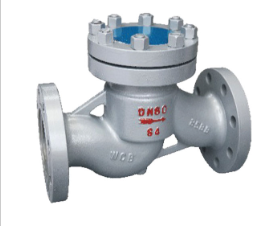long welding neck asme b16 5
Understanding Long Welding Neck Flanges According to ASME B16.5
In the realm of piping and fluid transportation, the use of flanges plays a significant role in ensuring the integrity and efficiency of the system. Among various types of flanges, long welding neck flanges hold a prominent position due to their unique design and applications. This article will delve into the specifics of long welding neck flanges as defined by ASME B16.5, their advantages, applications, and considerations for use.
Definition and Design
A long welding neck flange features a long, tapered neck that allows for a smooth transition between the flange and the piping system. This design is integral to its performance, enabling a reduction in stress and preserving the integrity of the pipe. According to the ASME B16.5 standard, these flanges are available in various sizes ranging from 1/2 inch to 24 inches in diameter and come in pressure classes that include 150, 300, 400, 600, 900, 1500, and 2500.
The long neck of these flanges is crucial as it extends the pipe into the flange, creating a robust connection that minimizes the risk of leakage. The adoption of a long welding neck design also facilitates better alignment during installation, ensuring the flanged joint can accommodate thermal expansion and contraction without compromising the seal.
Advantages of Long Welding Neck Flanges
One of the outstanding features of long welding neck flanges is their enhanced strength and resistance to deformation. The long neck allows for a larger weld area, leading to a more secure, integrity-rich joint. This capability is particularly important in high-pressure scenarios, making these flanges a popular choice in industries like oil and gas, chemical processing, and power generation.
Another advantage is their suitability for high-stress applications. Long welding neck flanges distribute stress along the length of the neck, reducing the potential for localized failures. This makes them ideal for dynamic environments where movement and vibration are factors, such as in offshore drilling or high-traffic industrial settings.
Additionally, their design reduces the risk of turbulence when liquids or gases flow through the system. This characteristic is vital in maintaining the efficiency of fluid transport operations, as excessive turbulence can lead to energy loss and increased wear on the system components.
Applications of Long Welding Neck Flanges
Long welding neck flanges are widely utilized across various industries, including
long welding neck asme b16 5

1. Petroleum and Natural Gas These flanges are often used in pipeline systems transporting crude oil and natural gas due to their strength and resistance to high pressures.
2. Chemical Processing In chemical plants, where corrosive substances may be transported, the long welding neck flange can be manufactured from various materials to mitigate the risk of chemical erosion and provide a robust connection.
3. Water Treatment Long welding neck flanges are commonly employed in water treatment facilities, offering durability and reliability that is essential for handling large volumes of liquid.
4. Power Plants In power generation, where systems operate under extreme temperatures and pressures, these flanges ensure safe and efficient operation.
Considerations for Use
When choosing long welding neck flanges, several factors need to be taken into account. First, the material of the flange should be compatible with the medium being transported. Options include carbon steel, stainless steel, and various alloys, each selected based on the operating conditions and environmental factors.
Second, proper welding procedures are crucial. The quality of the weld joint directly influences the performance of the flange. Compliance with industry standards, such as those outlined in ASME B16.5, ensures that the flanges are manufactured and installed correctly, minimizing the risk of failure.
Lastly, regular inspection and maintenance are paramount to ensure the longevity and operational integrity of the flanged joints. Adhering to established guidelines and standards helps identify potential issues before they lead to catastrophic failures.
Conclusion
Long welding neck flanges, as defined by ASME B16.5, play a vital role in the safety and efficiency of piping systems across various industries. Their unique design, combined with their strength and adaptability, makes them an essential component in many high-stress applications. Understanding their properties, advantages, and appropriate use is crucial for engineers and procurement professionals working in industries that rely on robust fluid transport solutions. As technology and materials continue to advance, long welding neck flanges will undoubtedly remain a key fixture in piping design and implementation.
-
Globe Valve: an Indispensable Component in Industrial Pipeline SystemsNewsApr.14,2025
-
Gate Valve: an Important Fluid Control DeviceNewsApr.14,2025
-
Flange: Important Components for Achieving Secure and Reliable ConnectionsNewsApr.14,2025
-
Check Valve: Key Components in Fluid ControlNewsApr.14,2025
-
Butterfly Valve: a Versatile Rotary ValveNewsApr.14,2025
-
Ball Valve: Exquisite Design and Widely Used Flow Control ComponentsNewsApr.14,2025
-
Real-World Success: Balanced Valves in Action for System EfficiencyNewsMar.19,2025




